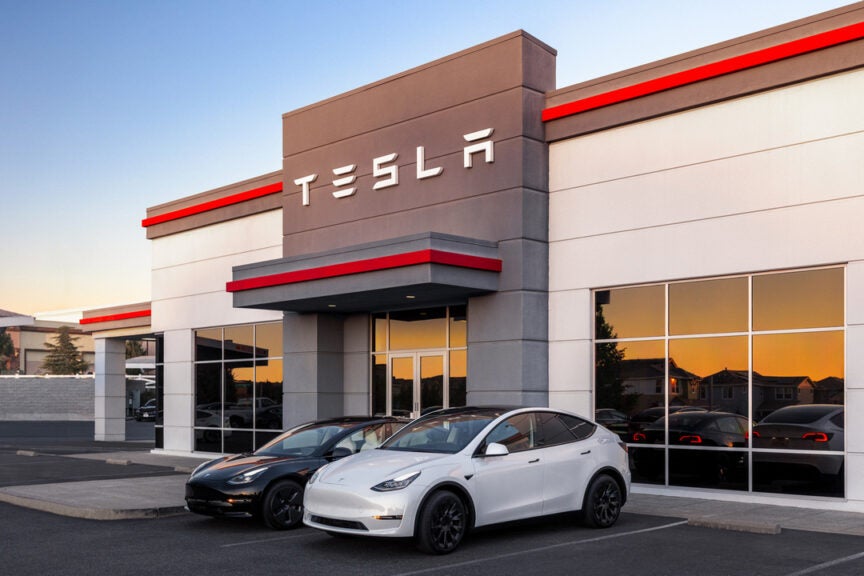Tesla’s Bold Leap: Unsupervised Full Self-Driving Hits the Road
In a groundbreaking announcement, Elon Musk has revealed that Tesla’s Full Self-Driving (FSD) technology can now operate without supervision. This significant advancement allows Tesla vehicles to autonomously navigate from the factory to loading docks, marking a potential turning point in the realm of autonomous vehicles. This article delves into the implications of this bold leap, examining the technology behind it, the potential benefits, regulatory considerations, and the future landscape of self-driving cars.
Understanding Tesla’s Full Self-Driving Technology
Tesla’s Full Self-Driving technology has been a work in progress since its inception. At its core, FSD utilizes a combination of advanced sensors, cameras, and artificial intelligence to interpret the driving environment. This sophisticated system is designed to perform a variety of driving tasks, including:
- Lane changes
- Traffic light recognition
- Autonomous parking
- Navigation on highways
- City street driving
The recent update enabling unsupervised driving marks a pivotal advancement. By removing the need for human oversight during certain tasks, Tesla aims to enhance the utility of its vehicles, particularly in logistical and delivery contexts.
The Technology Behind Unsupervised Full Self-Driving
The leap to unsupervised driving relies heavily on Tesla’s neural networks and data collection strategies. Tesla vehicles are equipped with an array of sensors that gather vast amounts of data from the road. This data feeds into Tesla’s AI algorithms, allowing the system to learn and adapt from real-world driving scenarios. Key features of this technology include:
- Vision-Based System: Utilizing high-resolution cameras, Tesla’s system is designed to mimic human vision, identifying pedestrians, obstacles, and road signs.
- Real-Time Processing: Tesla’s onboard computer processes data in real time, enabling rapid decision-making that is crucial for safe driving.
- Continuous Learning: The vehicles learn from every mile driven, continuously improving their algorithms to enhance safety and efficiency.
This technology allows Tesla vehicles to handle complex driving environments, making the shift to unsupervised operation not only feasible but also potentially safe.
Potential Benefits of Unsupervised Full Self-Driving
The implications of Tesla’s unsupervised Full Self-Driving technology are vast and varied. Some of the anticipated benefits include:
- Increased Efficiency: Autonomous delivery systems could streamline logistics, reducing costs and delivery times.
- Enhanced Safety: By minimizing human error, which is a significant factor in vehicle accidents, the FSD technology could lead to safer roadways.
- Environmental Impact: Optimized driving patterns can improve fuel efficiency and reduce emissions, contributing to a greener planet.
- Convenience: Drivers could reclaim their time previously spent behind the wheel, allowing for increased productivity or leisure.
Regulatory and Ethical Considerations
While the benefits of Tesla’s unsupervised Full Self-Driving technology are compelling, they come with a host of regulatory and ethical challenges that must be addressed. Policymakers and regulators face the task of establishing guidelines that ensure safety without stifling innovation. Some considerations include:
- Safety Standards: Regulatory bodies must determine what constitutes safe operation for unsupervised driving, evaluating performance metrics and failure scenarios.
- Liability Issues: In the event of an accident, determining liability becomes complex when a vehicle operates autonomously.
- Public Trust: Gaining public confidence in autonomous technology is crucial. Transparency in how the technology works and its safety measures will play a significant role in this.
Addressing these challenges will be essential for the widespread adoption of FSD technology.
The Future of Autonomous Vehicles
The introduction of unsupervised Full Self-Driving technology by Tesla is a significant milestone in the evolution of autonomous vehicles. As Tesla continues to refine its systems, the landscape for self-driving cars may transform dramatically. Here are some potential future developments:
- Widespread Adoption: As technology matures and regulations adapt, we may see an increase in the adoption of autonomous vehicles across various sectors, including public transportation, personal vehicles, and logistics.
- Integration with Smart Cities: The future of driving could involve seamless integration with smart city infrastructure, optimizing traffic flow and reducing congestion.
- Enhanced AI Capabilities: Continued advancements in AI could lead to even more sophisticated decision-making capabilities, making self-driving cars safer and more efficient.
Conclusion
Tesla’s announcement of its unsupervised Full Self-Driving technology marks a pivotal moment in the automotive industry. With the potential to redefine transportation, enhance safety, and improve efficiency, this leap forward could usher in a new era of autonomous vehicles. However, as this technology becomes more prevalent, it is imperative that stakeholders—manufacturers, regulators, and the public—work together to navigate the challenges it presents. The future of driving is undoubtedly on the verge of transformation, and Tesla is leading the charge.
As we stand on the brink of this new frontier, one thing is clear: the road ahead is full of possibilities, and with Tesla at the helm, the journey promises to be nothing short of exhilarating.
See more Future Tech Daily

